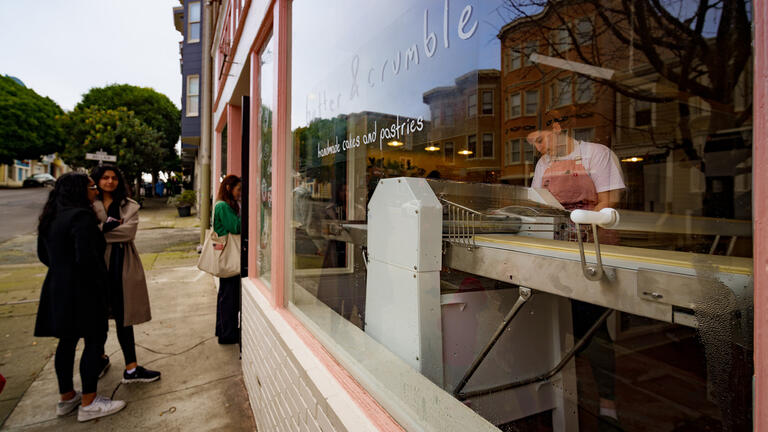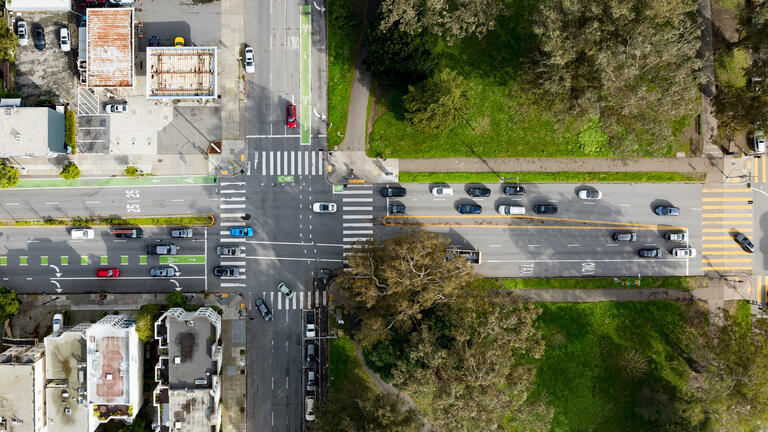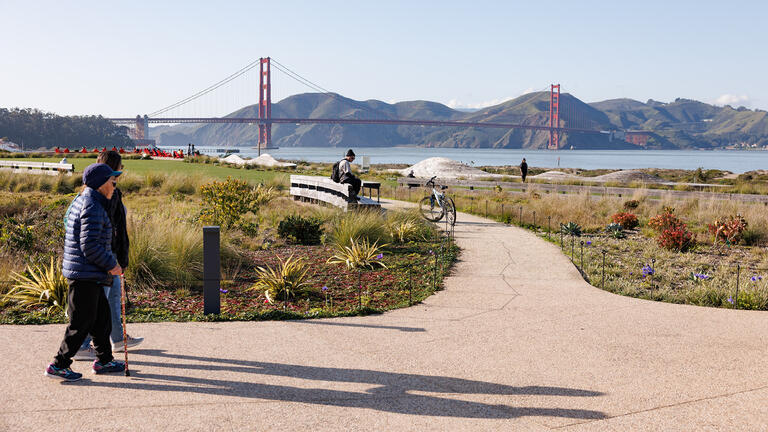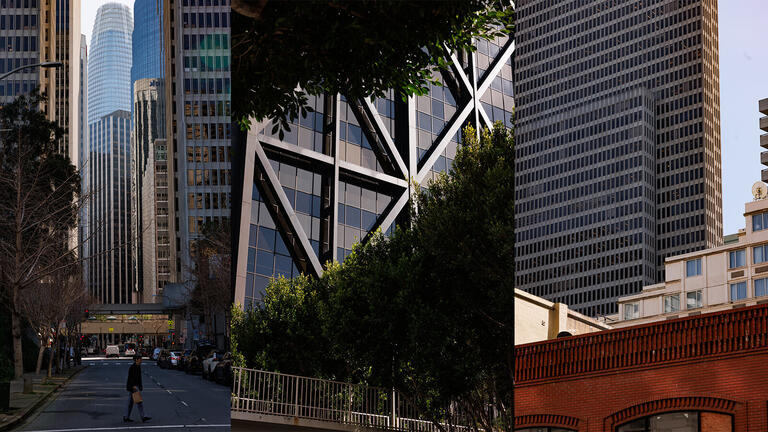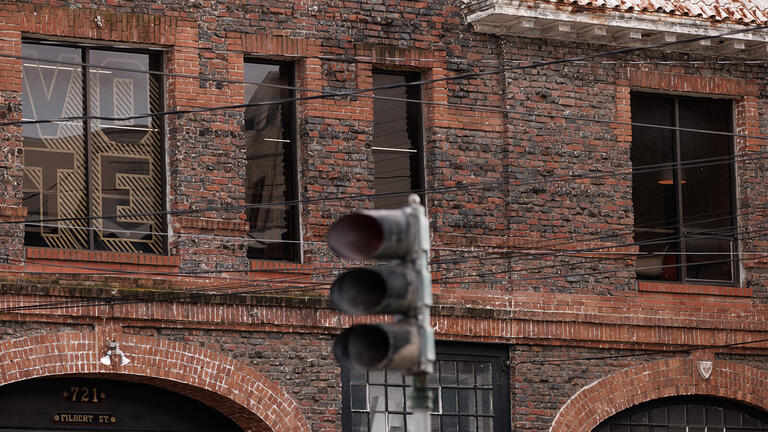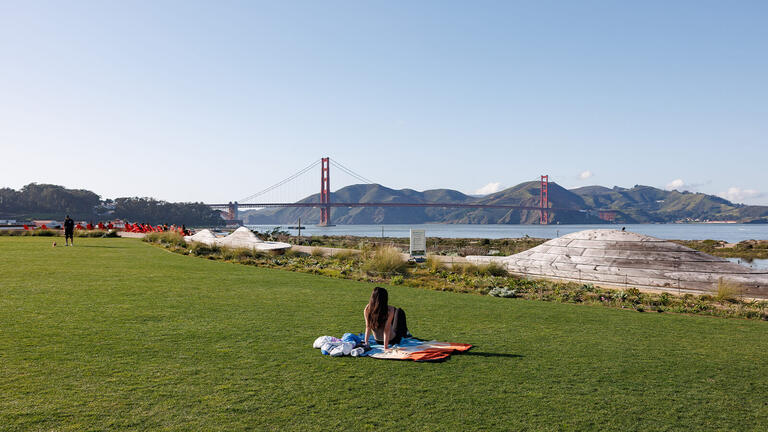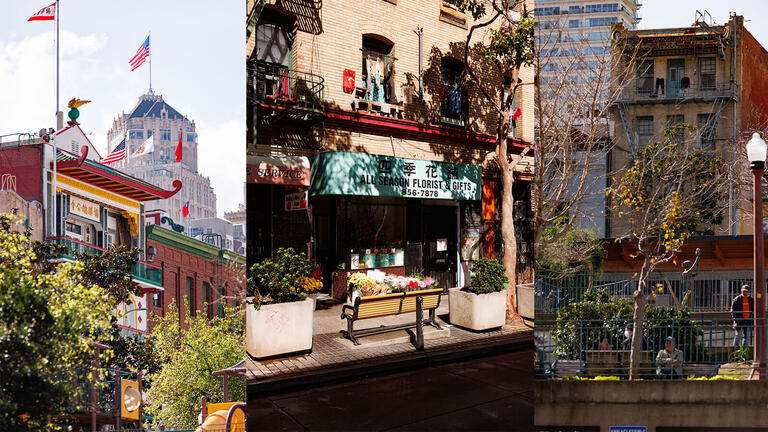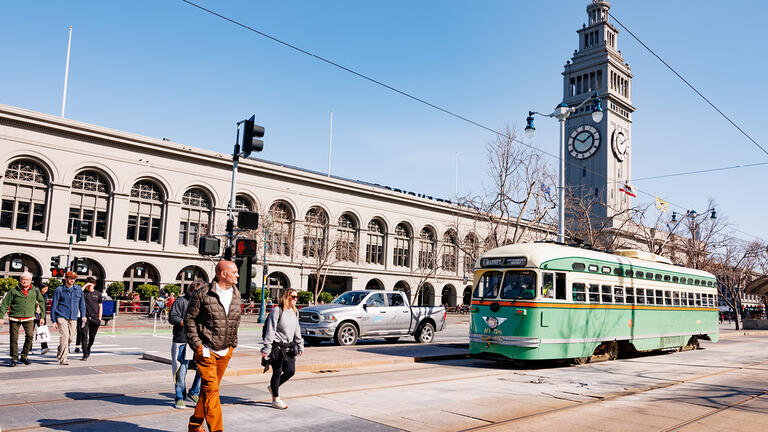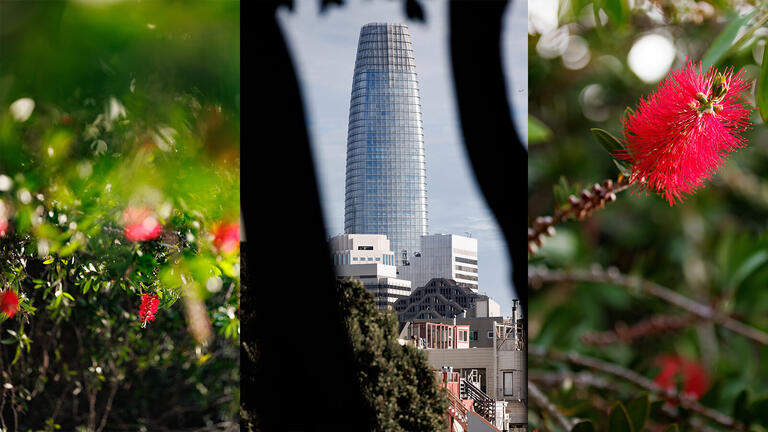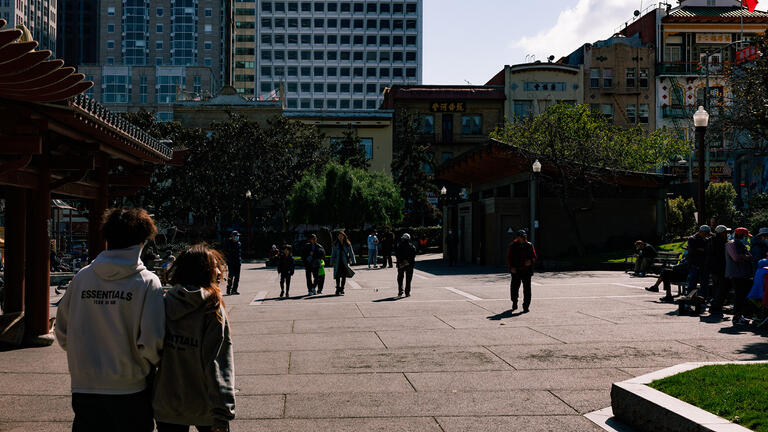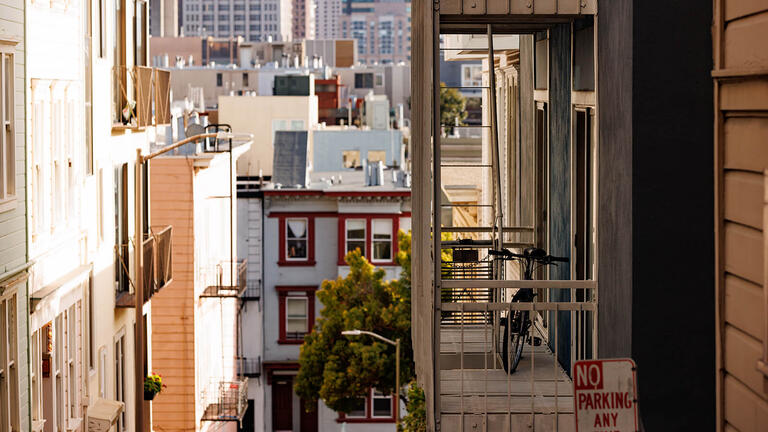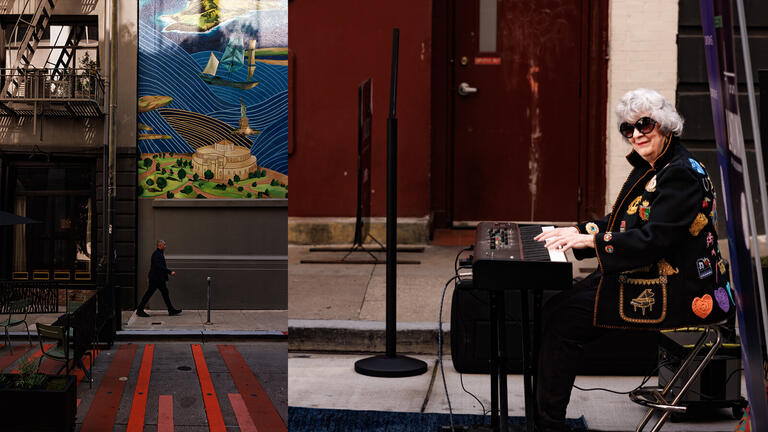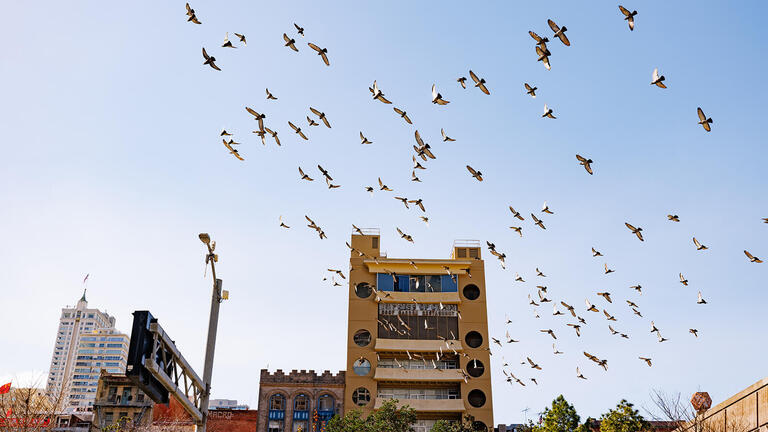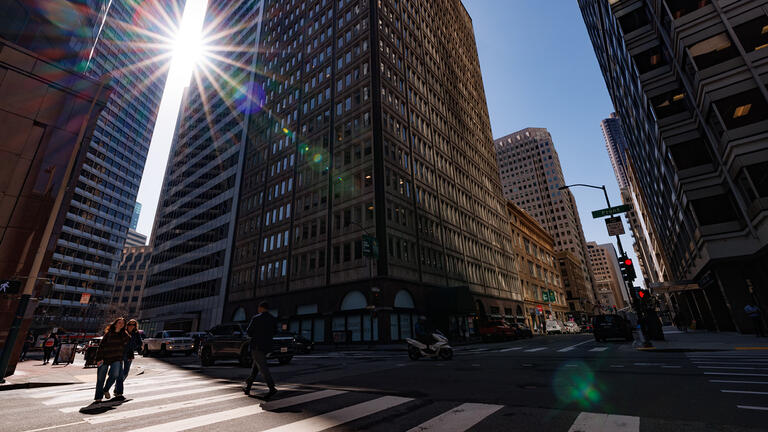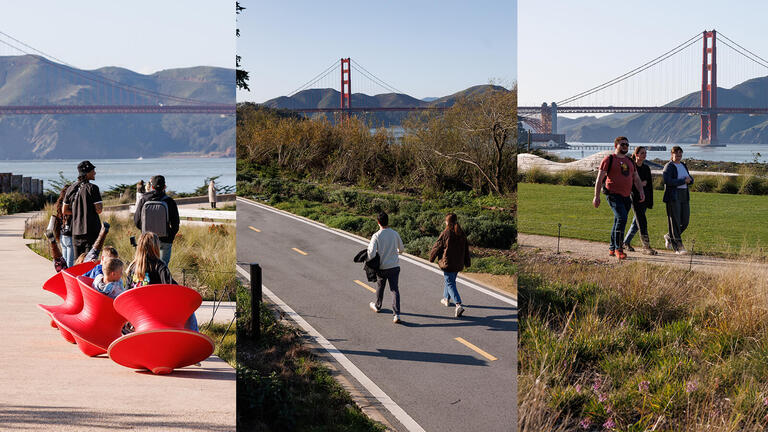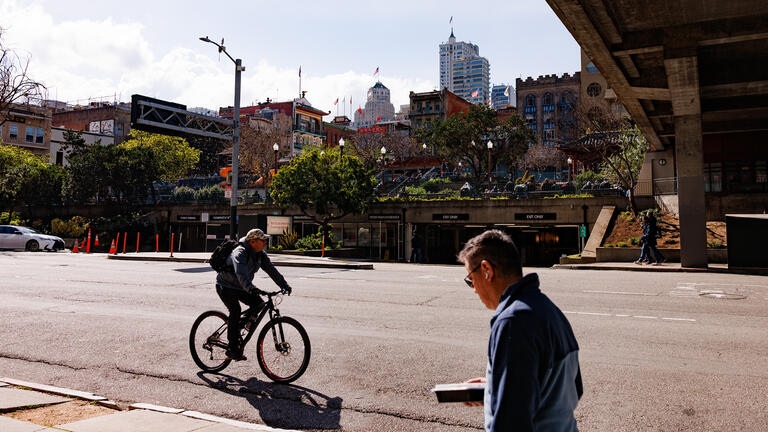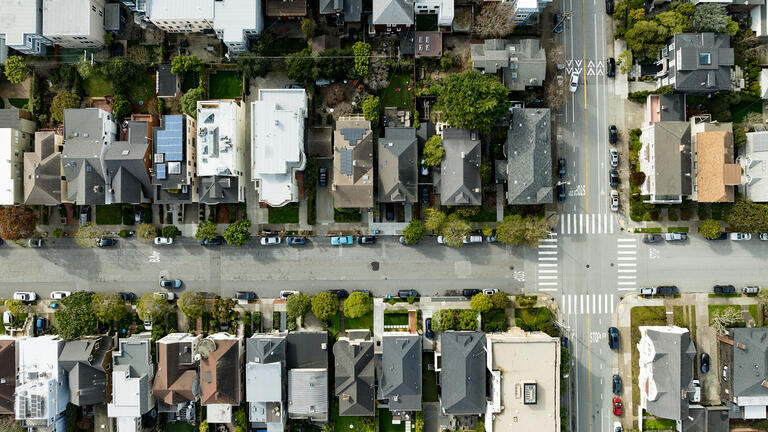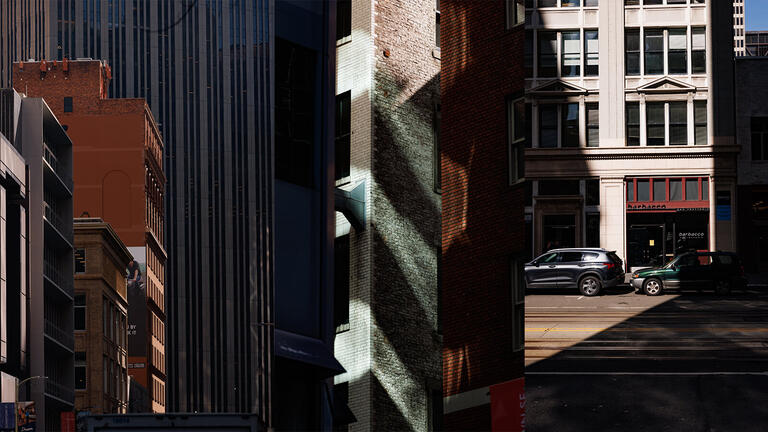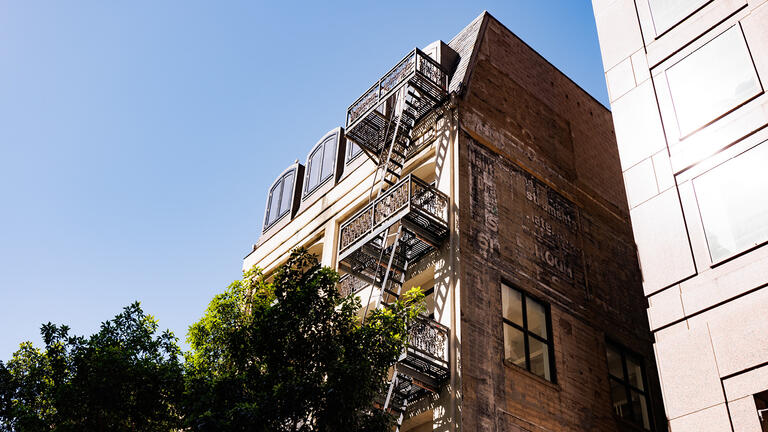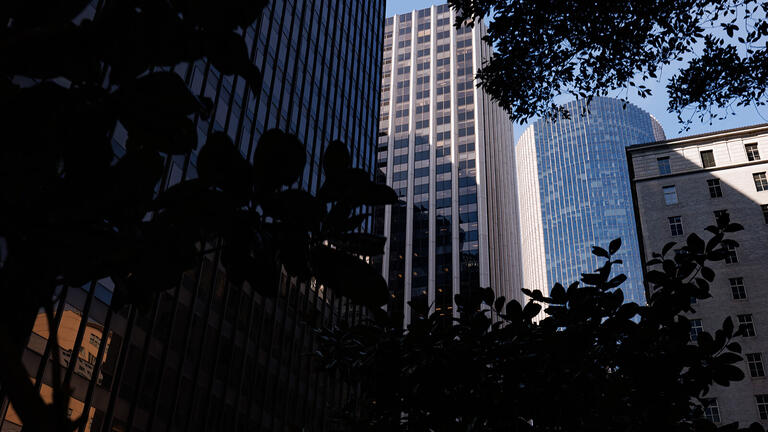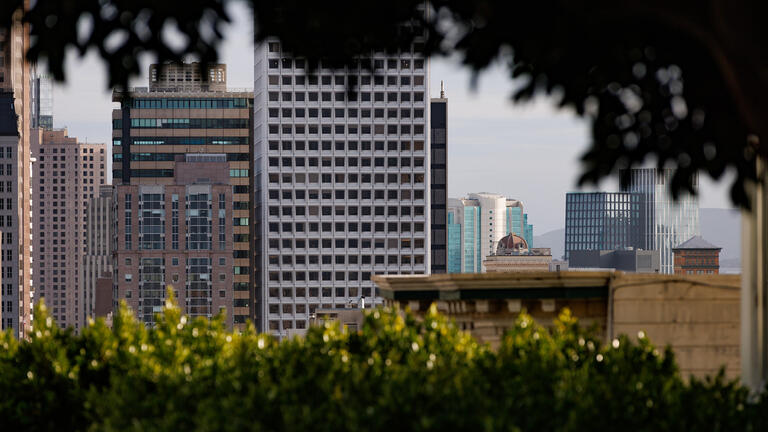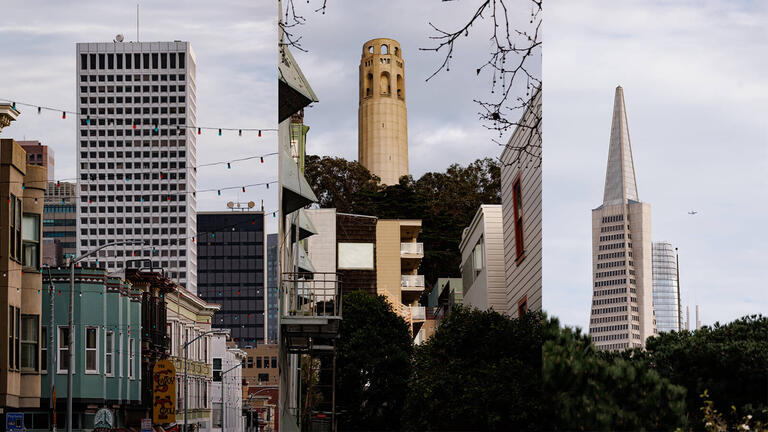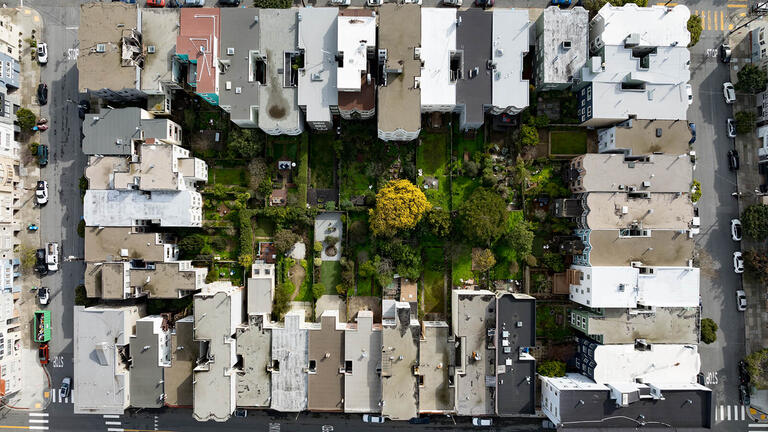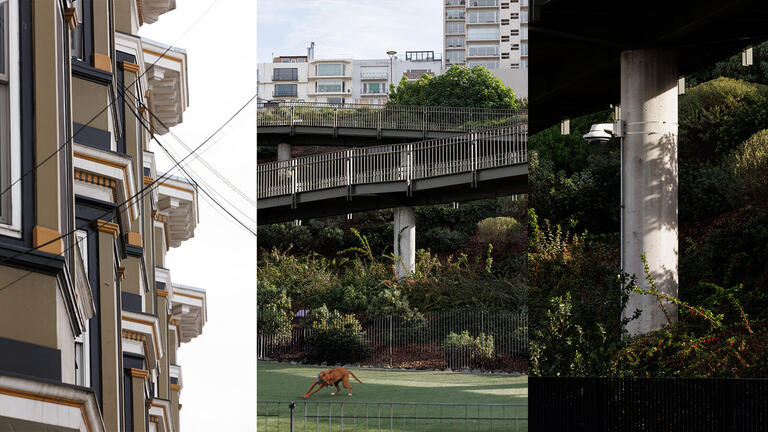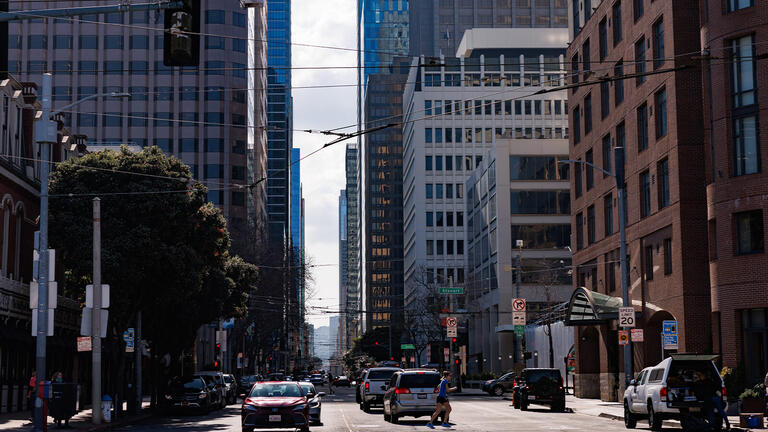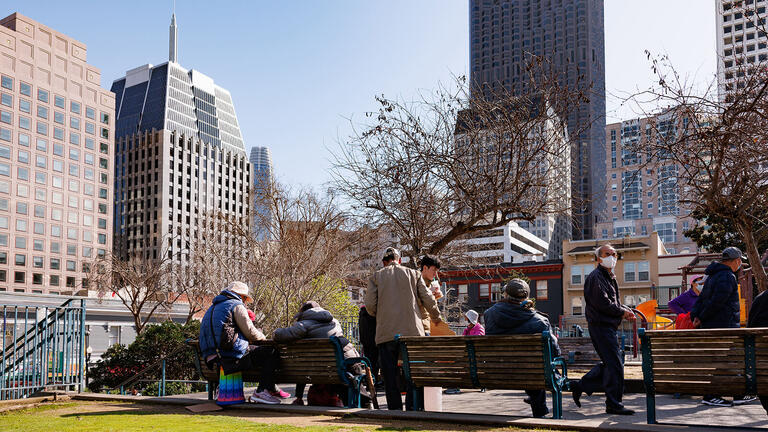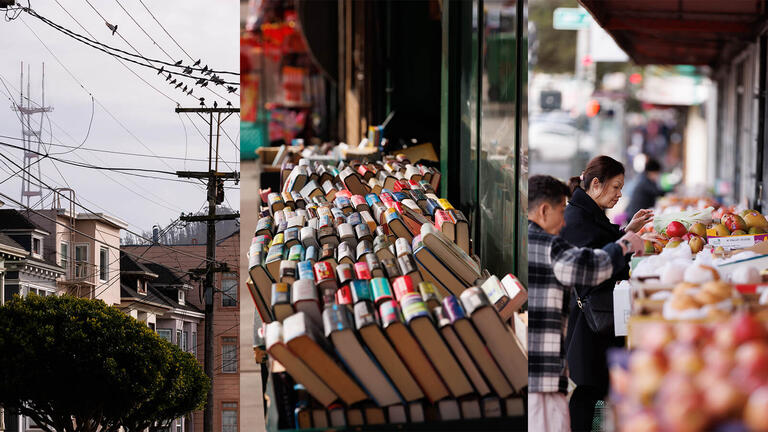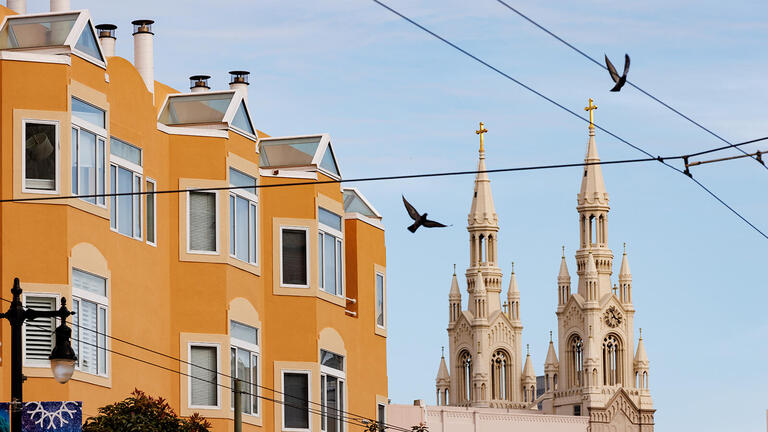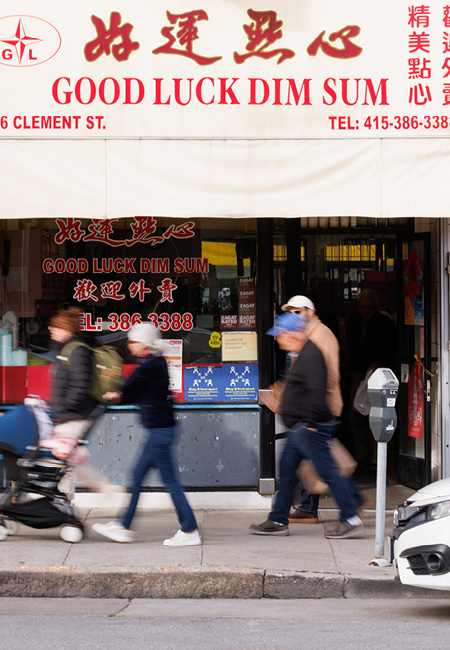
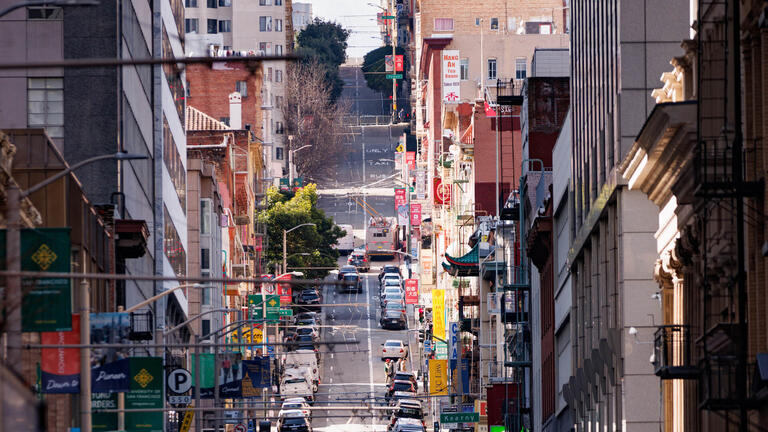
Did Someone Say Doom Loop?
On a Saturday morning, an hour before the doors open, the faithful form a line.
“I’m here for the bacon, egg, and cheese croissant,” says Abby Chiu. She drove from Union City, 30 miles away.
“Something savory. Maybe a mushroom galette?” says Kathleen Reed. She lives two blocks away.
“Anything they have left is what I want,” says Jawara Allen. He’s from Potrero Hill, three miles away.
From the front of Butter & Crumble bakery at the edge of North Beach, it’s hard to tell that San Francisco is dying.
You know the story. It made news across the nation. When COVID-19 struck the city in March 2020, offices closed. Three years later, thousands of workers who left the city to work from home during the pandemic hadn’t returned. Offices remained empty. Leases lapsed. Transit agencies suffered for lack of riders. Stores and restaurants failed. The Tenderloin neighborhood became a homeless encampment. Downtown became a ghost town. Tax revenues fell. Tourists stayed away. Hotels folded.

The story of a doomed San Francisco captured the nation’s imagination and held it for more than a year. Today, while a few say the city is struggling, others see San Francisco rising.
“San Francisco is definitely not in a doom loop,” says Billy Riggs, professor of public administration at USF. “San Francisco is exiting a down cycle and entering an innovation cycle.”
Riggs is trained as a city planner. He’s seen his share of cycles. As he speaks, he stands outside Good Luck Dim Sum on Clement Street in the Richmond District, the neighborhood that is home to USF and was named last fall by Time Out magazine as one of the 40 coolest in the world. He points to the west, toward the ocean, and then to the east, toward downtown. In both directions, the streets, shops, and markets teem with people.
In some ways, Riggs says, the media is to blame for perpetuating the idea of a doom loop.
“If you’re a journalist and you say that the most beautiful city on the planet is turning into the zombie apocalypse, you’ve got a great story on your hands,” Riggs says.
“‘Doom loop’ is catchy. It makes a great headline,” says Tim Redmond, instructor of media studies at USF and former executive editor of the San Francisco Bay Guardian. “Doom, disasters, crime, violence — the media loves all of that, partly because viewers and readers love hearing about disasters but also because disasters are easy to write about: Someone died on the sidewalk, or someone robbed a Walgreens in broad daylight.”
San Francisco is about boom and bust, wealth and poverty, collapse and recovery — “I mean, the city’s official flag has a phoenix on it.”
Professor Brian Komei Dempster
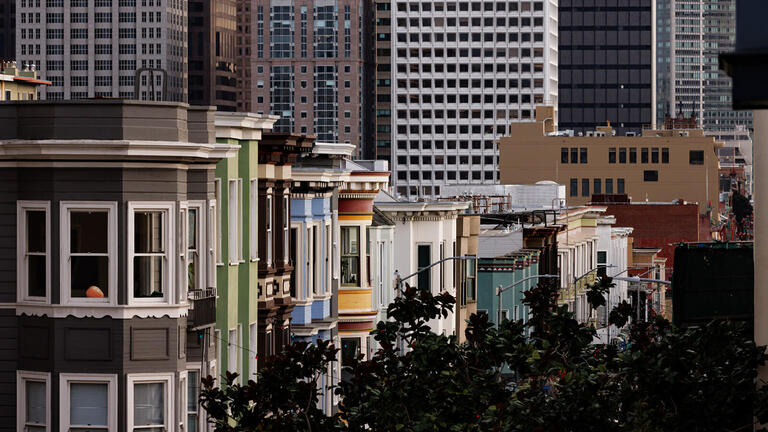
This story gets picked up and it spreads, Redmond says. “It’s on the local news, and then the national news, and then it becomes a meme, and then it becomes a thing.”
San Francisco is an idea as much as it is a place, Redmond says. It’s a screen onto which people project their dreams — and their nightmares. It’s the land of steep hills, sourdough bread, the Summer of Love, and possibility. It’s also the land of high rents, mass layoffs, open-air drug deals, and people living on the streets. “That’s the nature of San Francisco,” says Brian Komei Dempster, poet and professor of rhetoric at USF. San Francisco is about boom and bust, wealth and poverty, collapse and recovery — “I mean, the city’s official flag has a phoenix on it.”
San Francisco rises, says Dempster. It rose after the fires of 1849 and 1850, after the earthquake of 1906, after the earthquake in 1989, and after the dot-com bust in 2001.
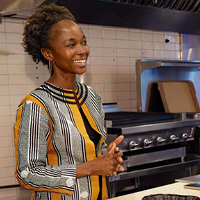
A Restaurant Rises Again
Nafy Flatley ’06 has seen the rise, fall, and rise of San Francisco. In 2020, she launched a Senegalese restaurant, Teranga, in La Cocina Municipal Marketplace in the Tenderloin. In 2023, the marketplace closed, a victim of the pandemic and of reduced foot traffic in the neighborhood. Now Teranga has reopened downtown in Embarcadero Center. Last fall Flatley applied to a city program called Vacant to Vibrant and received a small retail space rent-free for the first three months. Teranga has now occupied the space for six months. "I'm glad to be here, and I hope to stay longer," Flatley says. "It takes more than a year to settle in and get to know your customers."
But is San Francisco rising now?
Fox News says no. “The Democratic-run city is in full-blown crisis mode. … Nordstrom, Whole Foods, and dozens of other stores have closed, leaving San Francisco on the brink of economic catastrophe.”
London Breed MPA ’13 says yes. She’s the mayor of San Francisco. “We have challenges, like all major cities, but we have the investment, the excitement, and the energy to be an economic leader for California and the country,” Breed says. “We are the AI capital of the world. We’re working on making the city clean, safe, and welcoming for everyone, and working with businesses to revitalize downtown. We’re seeing tourism return to San Francisco, and our crime rates are hitting 10-year lows.”
Meanwhile, John Coughlan, director of the MS in Entrepreneurship and Innovation program in the School of Management, says the San Francisco Bay Area remains the No. 1 place in the world for venture capital investment. He cites the latest report from Ernst and Young: Greater San Francisco saw $9.5 billion invested in the third quarter of 2023 compared to $3.5 billion in greater Boston and $3 billion in greater New York.
“What San Francisco does best is reinvent itself. Right now, downtown is turning into a place where people want to live, work, and play — not just work.”
Professor Billy Riggs
“The technology, education, health care, and government sectors continue to hire,” says Julia Hing, director of employer relationships in the career center at USF. She says that Consilient Labs, the Environmental Protection Agency, Environmental Science Associates, JPMorgan Chase, KNow Research, and Perlara PBC are just some of the organizations that have hired new USF graduates within the past year.
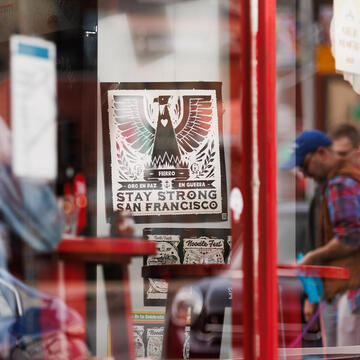
While many agree that San Francisco is recovering, it may take time. Riggs adds that in some ways, the city is better now than it was before.
“It’s greener today than it was 10 or 20 years ago,” Riggs says. “You can walk from Mount Sutro Open Space Reserve to Golden Gate Park and out to Ocean Beach and then to open space in the Presidio — a national park inside the city limits.”
In just the last three years San Francisco has become a lot more friendly to walkers and cyclists, Riggs says. During the pandemic, the city closed some streets to automotive traffic and created other “slow streets” on which pedestrians and cyclists had priority. Several of those slow streets are now permanent.
“The Great Highway is now closed to cars on weekends, so you can walk from Golden Gate Park all the way down to Lake Merced — and you can walk in the middle of the road,” Riggs adds. “San Francisco is a national treasure in that respect, just like Yosemite is a national treasure. When visitors look at San Francisco today they’re like, ‘Wow! This is great! How did
you do that?’ I think that today San Francisco is a much more poetic, beautiful, and livable city than even Paris is.”
Each time San Francisco stumbles, it uses innovation to recover, Riggs says. “I remember walking in the Mission in 2001, and back then you could almost see tumbleweeds rolling down the street. San Francisco was in a death spiral. Pets.com had just crashed. And then along comes two little companies called Facebook and Google. And then all of a sudden, Twitter is in Fox Plaza near Market Street, and you have this resurgence of talent and money and ideas.”
Every city suffers during a poor economic cycle, Riggs says, “but what San Francisco does best is reinvent itself. Right now, downtown is turning into a place where people want to live, work, and play — not just work. Along Montgomery Street, near the Transamerica Pyramid, around Jackson Square we’re slowly seeing more old buildings converted to a mixture of restaurants, retail, residential, and offices. It’s not just offices anymore, so people stick around instead of leaving at 5 o’clock.”
San Francisco and the University of San Francisco have a symbiotic relationship, says Paul J. Fitzgerald, S.J., president of USF. Like most Jesuit universities around the world, USF was founded in a city — in 1855, on a cow path that would become Market Street — to educate future leaders of the city.
“What’s the opposite of a doom loop?” says Fr. Fitzgerald. “An ascending spiral? A new horizon? That’s what we’re in right now. San Francisco isn’t dying. It’s changing.”
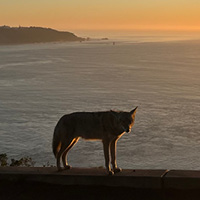
The Coyote Makes a Comeback
Coyotes are as much a part of San Francisco as fog or cable cars, but they haven't always lived in the city. From the 1930s until the early 2000s, Canis latrans was extinct in San Francisco, driven out by poisoning, hunting, and habitat loss. Today, with habitat restoration and with the city's recent Green Connections corridors that link open spaces, dozens of coyotes roam in the city, including on Lone Mountain. They bring wild nature to the metropolis.
